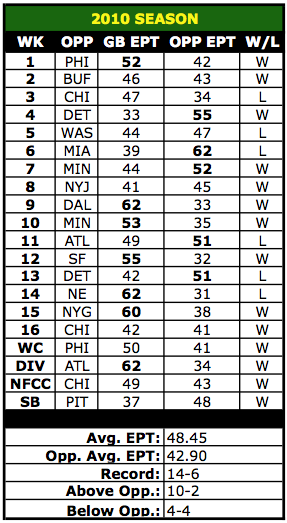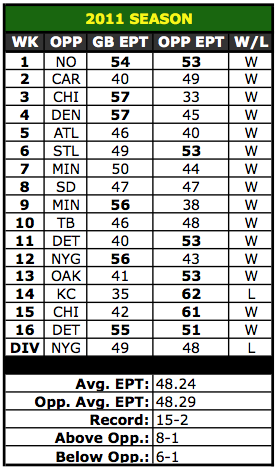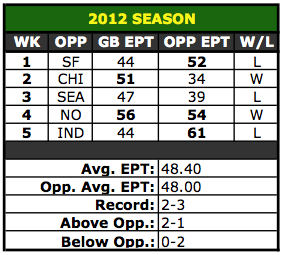

I love a good podcast. Despite being a music teacher, I have started listening to music less and less on long drives and commutes to and from work. Instead, I turn my iPod to the latest episodes of Green & Gold Today, Packers Transplants, Cheesehead Radio, and The Aaron Rodgers Show. While these are all Packers-centric shows, there is one podcast that I listen to religiously for some NFL perspective from outside the Green Bay “community”: The B.S. Report with Bill Simmons.
For those who might not know, Bill Simmons is the editor-in-chief of Grantland.com, an ESPN-affiliated website covering sports and pop culture. His podcast, The B.S. Report, debuted in 2007 and has been one of ESPN’s most downloaded podcasts. He frequently welcomes a variety of guests, though my favorites include comedian “Cousin Sal” Iacono and Football Outsider’s Aaron Schatz.
I also enjoy the appearances by Michael Lombardi, who speaks with a lot of experience from the executive side of the NFL. He worked for five teams over a span of 20 years before settling into a role of TV analyst and sportswriter. Lombardi has made a couple of appearances on The B.S. Report so far this season, but one in particular keeps ringing in my ears as the Packers struggle to find their offensive “identity.”
The podcast aired on September 10th, the Monday after the Green Bay Packers’ opening season loss to the San Francisco 49ers. Obviously, the game was one of the biggest of the weekend, and it really set a tone for both franchises going forward. The frustrating part for Packers fans is that the things discussed by Lombardi and Simmons are still maddeningly pertinent going into the sixth week.
“If I’m a Packers fan,” commented Simmons, “my team had nine months to improve all the things we didn’t do in that playoff game, and yet we’re back to square one again. Is that fair?”
Michael Lombardi then replied with some interesting insight into his approach to analyzing games: “Yeah, and I think this. One of the things I do every Monday morning when I come in here is I always look at – this is a Bill Parcells thing – is you always look at rushes and completions. So you take the rushing totals, and you take the completed pass totals, and you add those two numbers together. . . and it helps you determine execution of your football team. So if you have, for example, 30 completed passes and 25 runs, that’s 55, and the number to win is anything over 51. So when you’re Green Bay, for example, and you can’t get any running game, it’s tough to complete 45 passes in a game against anybody. And it’s tough to drop back that many times.”
I was very intrigued at this idea when I heard Lombardi describe it, and it’s been fermenting in my mind ever since. It makes sense that this “Executed Play Total” (as I’m going to call it) or “EPT” is an indicator of the success of a team. Lombardi uses it as a foundation for striking a balance between the running game and passing game, though it also speaks to things like time of possession and overall control of the game. A high EPT would suggest a majority time of possession, offensive success on drives, and the defense helping to provide multiple drive opportunities.
So me being the numbers guy I am, I decided to take a look at the Packers’ Executed Play Totals since 2010 and see what relationships it has with game outcomes. Here’s what I found:
My first reaction was one of mild surprise, in that the numbers didn’t correlate directly to the outcome as often as had thought. In 2010, the concept holds more water, in that the Packers were able to go 10-2 when their EPT was higher than their opponent’s. On the flip side of the coin, they went 4-4 when they had the lower EPT. Additionally, across all the games charted above, teams were 19-8 when hitting the “magic number” of 51.
However, 2011 was a strange series to look at. The Packers had a lower EPT in 7 of their 17 games, yet won all but one of them. In fact, their Week 15 game against the Chicago Bears stands out as the biggest anomaly. While the Bears had an EPT of 61 (well over the “magic number”), the Packers’ EPT was only 42.
Knowing what we do about the Green Bay Packers and their 2011 season, it helps us to identify the aspects of the game that can’t be accounted for using EPT. In fact, some of these aspects make the number downright misleading.
The Green Bay Packers offense last year was a big play machine. Jordy Nelson alone made huge waves on big throws down the field. Aaron Rodgers seemed to move the ball at will, and he would do so in big chunks of yardage. This means they could be more productive on fewer plays, meaning an overall lower EPT.
On the flip side of the ball, the defense gave up a lot of yardage – and a lot of plays to boot. Their saving grace, though, was the turnover. It doesn’t take a lot of thought to realize that turnovers and special teams play can be the big hidden factors behind a high EPT and an L in the outcome column. Opponents put up an EPT of over 51 in seven of their matches, yet the Packers only lost one of them.
Nevertheless, the statistic does speak to the basic execution of a team. Perhaps it could have given us a clue that the Packers’ success in 2011 was inherently flawed. Meanwhile, the 2010 Super Bowl season saw their EPT numbers surge across the latter half of the season and into the playoffs. Maybe it speaks more to the odds of success than just a straight win or loss.
Finally, looking at the five games from this year, we can see this statistic “return to normal,” in a sense. Disregarding the outcome and officiating controversy of the Seattle game, their record matches the EPT comparisons across the board. And not surprisingly, their games above the “magic number” also coincide with productive running performances by the offense.
No matter what statistical value you glean from the Executed Play Total, it helps to support the theory that balance is still important in the offense. As Lombardi said, you can’t just drop back on every play and expect success. Running the ball, moving the chains, and controlling the clock are keys to winning any game.
——————Chad Toporski, a Wisconsin native and current Pittsburgh resident, is a writer for AllGreenBayPackers.com. You can follow Chad on twitter at @ChadToporski
Follow @ChadToporski——————




Do you think you would see more of a correlation if you somehow normalized for big plays (like over 10 yards or so?) Like you mentioned in 2011, the Packers didn’t throw as much as they probably should have because they kept getting yardage in big chunks, but considering that the Packers had perhaps one of the most explosive offenses in NFL history, this is definitely an outlier and not the norm.
Also I have to wonder how running the ball factors into the equation, for completed passing plays, you can make the argument that the majority of plays will have a net gain, but you can’t really say that in terms of running the ball, RBs are often stuffed behind the line of scrimmage and even gaining 1-2 yards per carry is actually putting you behind in terms of down and distance. For instance, would the Packers have had a decent chance of winning the game against SF if they had run it 51 times? Probably not.
I would definitely be interested to see how big plays affect things from a numbers standpoint. I’ll see what I can do…
As for running the ball, I think it still reflects your ability to get positive plays. After all, too many negative plays, and you end up punting more often, which would reduce your overall number of snaps.
Right but the formula doesn’t account for positive rushing attempts, only attempts. It’s a little like passing attempts versus passing completions, presumably passing completions are more indicative of success since most completed passes are for positive yardage, while an incomplete pass essentially only digs the hole bigger. I think one possible way to get around this is to only count rushing plays that go over 3 yards (which is what teams are shooting for in terms of down and distance). Obviously you would have to rework your magic number to account for eliminating the amount of negative rushing attempts but it might increase the correlation.
True… I’m wondering if, perhaps, they just use total rushing attempts since it’s easier to get an instance snapshot of the game balance. Looking at the success/failure of each attempt would be more involved.
I think Lombardi uses it mostly as a starting point, getting a general idea of a team’s production and execution before looking at the more defining stats.
The Pack would have almost certainly won against Seattle if they had gotten a 1st down on that last series. Couldnt run the ball because the D was in out backfield.
Where ever this balance is,I hope the Packers find it fast…as MR Miyagi says ” Packer-san,no find the balance…squish,just like grape”.
IMO,I don’t think the run game is the balance thats lost and is a ‘Fools Gold’search for it.
Well, I think we’ve seen that the Packers have shown it’s possible to win without a strong running game, especially last year.
This number, like all statistics, is merely a tool that gives us a building point for further discussion and analysis.
Chad, what music subject do you teach and where?
I am in Candidacy for the Doctorate at UT Austin in Trumpet Performance. Most musicians I know dislike athletics…
Nice to know a fellow musical cheesehead!
I am a public school teacher in a school district near Pittsburgh. I currently teach middle school general music and chorus, as well as help out with the marching band. I also played with the Army Bands for four years out of high school.
Nice.
OoooAhhhhh! Chad
I think the base for your inputs is the only thing that you can use. Weighting for other subjective issues only corrupts the input and results in a biased output.
My conclusion is exemplified in your Lombadi quote, “As Lombardi said, you can’t just drop back on every play and expect success. Running the ball, moving the chains, and controlling the clock are keys to winning any game.” The question is will MM see this wisdom before it’s too late. When they return home after the St. Louis game they’ll be one game short of half the season. 4 & 4 is not good enough. 5 & 3 keeps them alive.